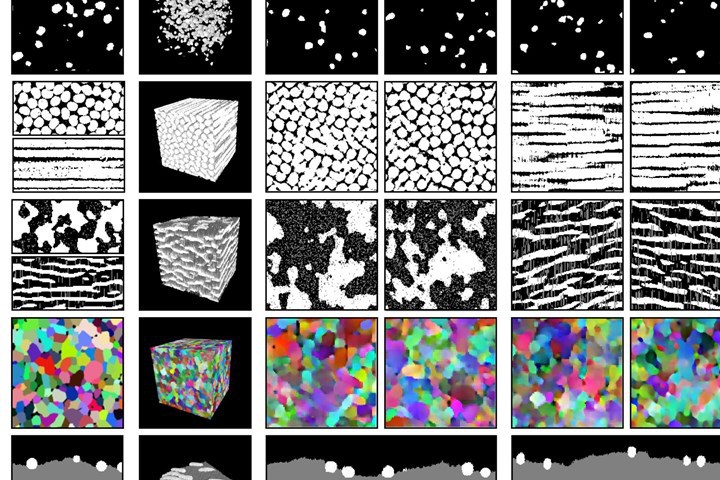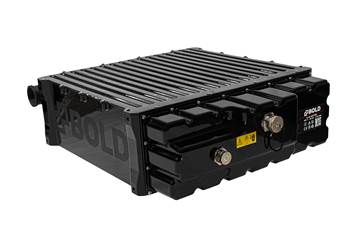Composites Use in Automotive
Composites are used frequently in motorsports and lower volume, high-end/luxury vehicles, which typically favor continuous carbon fiber materials. They are also often used to fabricate exterior structures in racing vehicles, where their relative light weight provides speed and performance advantages over metals. Within mid- and high-volume production vehicles, common composite applications include glass fiber-reinforced polymer (GFRP) leaf springs, suspension components, and drive shafts, sheet molding compound (SMC) body panels and frames; bulk molding compound (BMC) housings and support structures; and injection-molded thermoplastics for bumper frames, lift gates and seat structures.

Latest Automotive Articles
VIEW ALLSwRI announces JIP to spur H2 refueling, infrastructure tech for heavy-duty vehicles
SwRI’s H2HD REFUEL 4-year project is underway to advance H2 refueling and explore potential alternatives via system modeling, experiments and theoretical studies.
WatchSPE ACCE 2025 issues call for papers, sponsors and exhibitors
Submit a paper or technical presentation, or become a sponsor and/or exhibitor for SPE ACCE 2025, celebrating its 25 years Sept. 3-5 in Novi, Michigan.
Read MoreBraided thermoplastic composite H2 tanks with co-consolidated molded boss areas to fit EV battery space
BRYSON project demonstrates possible designs, automated manufacturing and low permeability concepts, including EVOH liner and novel PPA matrix.
Read MoreOn the radar: Innovations in composite battery enclosures
A look at recently reported design, material and process innovations for composites-intensive battery enclosures, developed to support the ramp-up of EV and AAM vehicles.
WatchDITF oriented rCF tapes target virgin fiber CFRP substitution
Infinity project developed highly oriented rCF/PA6 tapes with 88% the tensile strength, modulus of a virgin CFRP product and 49-66% reduction in global warming potential.
Read MoreNew Flyer selects Hexagon Purus H2 tanks for fifth consecutive year
Type 4 tanks will continue to be supplied for the mass mobility provider’s Xcelsior Charge FC fuel cell electric transit buses.
Read MoreKnowledge Centers

Review the state of the art in design, simulation, failure analysis, digital twins, virtual testing and virtual inspection.
LEARN MORE
CompositesWorld’s CW Tech Days: Infrastructure event offers a series of expert presentations on composite materials, processes and applications that should and will be considered for use in the infrastructure and construction markets.
LEARN MORE
Join us for insights into advanced bonding techniques and welding processes for composite materials to ensure durability and structural integrity.
LEARN MORELatest Automotive News And Updates
SPE automotive names winners for 53rd annual automotive innovation awards program
SPE’s annual Automotive Innovation Awards highlighted several composite part designs in vehicle safety, comfort and efficiency.
Read MoreSPE ACCE 2024 highlights innovation across industry, academia
SPE shares highlights, award recipients, exhibitors, speakers and more from its 2024 Automotive Composites Conference & Expo (ACCE).
Read MoreAptera completes function test for first production-intent sEV
First initial testing of the production vehicle’s BinC composite body structure, drivetrain and battery pack demonstrates progress toward real-world validation.
WatchHexagon Agility receives wave of RNG fuel system orders for Class 8 trucks
RNG/CNG fuel system installations with Type 4 CFRP pressure vessels, powered by Cummins’ 15-liter natural gas tank, adds 230,000 heavy-duty trucks to the addressable RNG/CNG market annually.
Read MoreBucci features 20-inch center lock version of carbon fiber wheel
Bucci Composites introduces new carbon fiber wheel option for high-performance automotive applications.
Read MoreU.K. composite experts join SCALE-UP project supporting net-zero automotive tech
Advanced Propulsion Centre funding backs JLR, Helicoid, iCOMAT, Lineat Composites and others as they accelerate the growth of the U.K. automotive composite supply chain.
Read MoreFeatured Posts
Bladder-assisted compression molding derivative produces complex, autoclave-quality automotive parts
HP Composites’ AirPower technology enables high-rate CFRP roof production with 50% energy savings for the Maserati MC20.
Read MoreCo-molding SMC with braided glass fiber demonstrates truck bed potential
Prepreg co-molding compound by IDI Composites International and A&P Technology enables new geometries and levels of strength and resiliency for automotive, mobility.
Read MoreComposite materials, design enable challenging Corvette exterior components
General Motors and partners Premix-Hadlock and Albar cite creative engineering and a move toward pigmented sheet molding compound (SMC) to produce cosmetic components that met strict thermal requirements.
Read MoreComposites reinvent transportation
Celebrating National Composites Week, CW shares ways in which composites continue to evolve mass transit.
Read MoreComposites reinvent automotive
To celebrate National Composites Week, CW shares some of the latest innovations in automotive composites, from new process technologies to novel commercial applications.
Read MoreCarbon fiber, bionic design achieve peak performance in race-ready production vehicle
Porsche worked with Action Composites to design and manufacture an innovative carbon fiber safety cage option to lightweight one of its series race vehicles, built in a one-shot compression molding process.
Read MoreFAQ: Automotive
How are composites used in automotive structures?
Within mid- and high-volume production vehicles, common composite applications include glass fiber-reinforced polymer (GFRP) leaf springs, suspension components, and drive shafts, sheet molding compound (SMC) body panels and frames; bulk molding compound (BMC) housings and support structures; and injection-molded thermoplastics for bumper frames, lift gates and seat structures.
As electric vehicles (EV) become more prevalent on the road and in development by automotive manufacturers, new opportunities exist for composites and composite materials development. For example, a lighter-weight, composites-intensive vehicle is likely capable of driving for a longer range between charges. Battery enclosures present one large market opportunity in the EV market.
Why use composites for electric vehicle (EV) battery enclosures?
As the automotive industry rapidly electrifies its fleets, interest is growing among OEMs and battery module producers in using composite materials for battery enclosures — covers and trays that hold and protect the frames and battery cells themselves.
There are many reasons for this, including the ability to reduce mass and stack tolerances, the fact that battery enclosures are multicomponent assemblies and poor impact performance of metals. In each of these areas, composite battery enclosures offer quantifiable benefits versus metals: lower mass, higher design freedom with greater space efficiency, faster assembly, no corrosion, greater durability and — with specific formulations — better flame resistance/fire containment.
Source: Price, performance, protection: EV battery enclosures, Part 1












.jpg;maxWidth=300;quality=90)




















